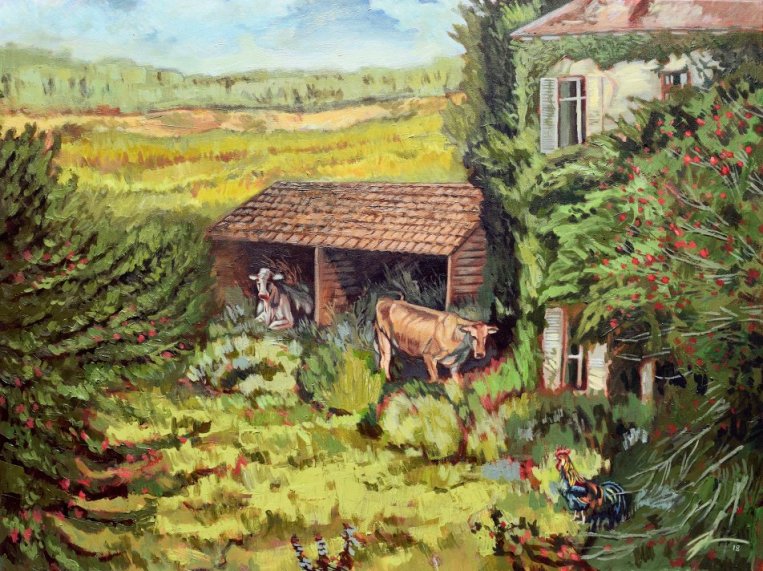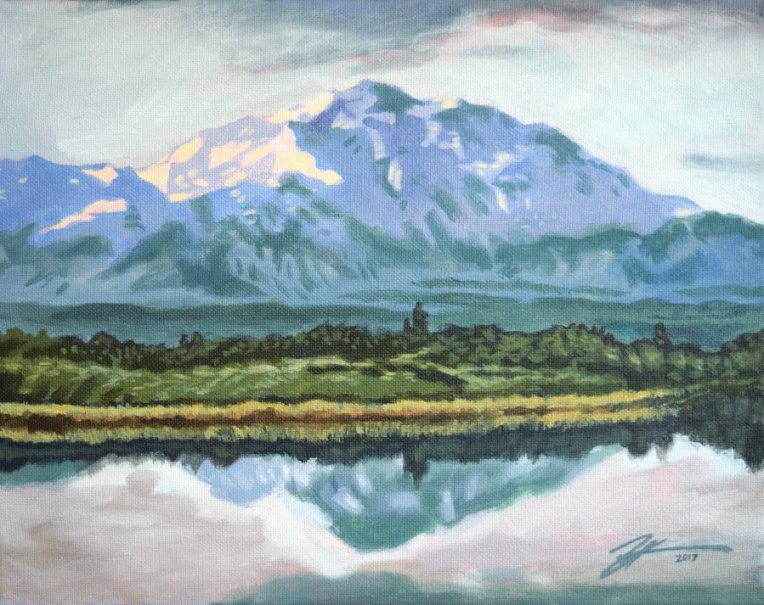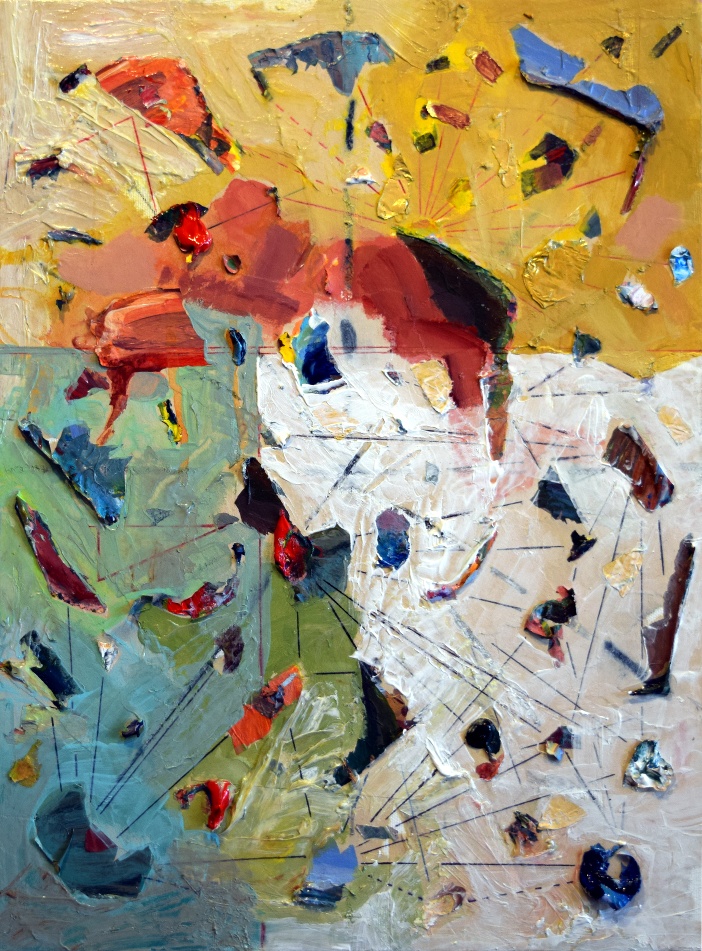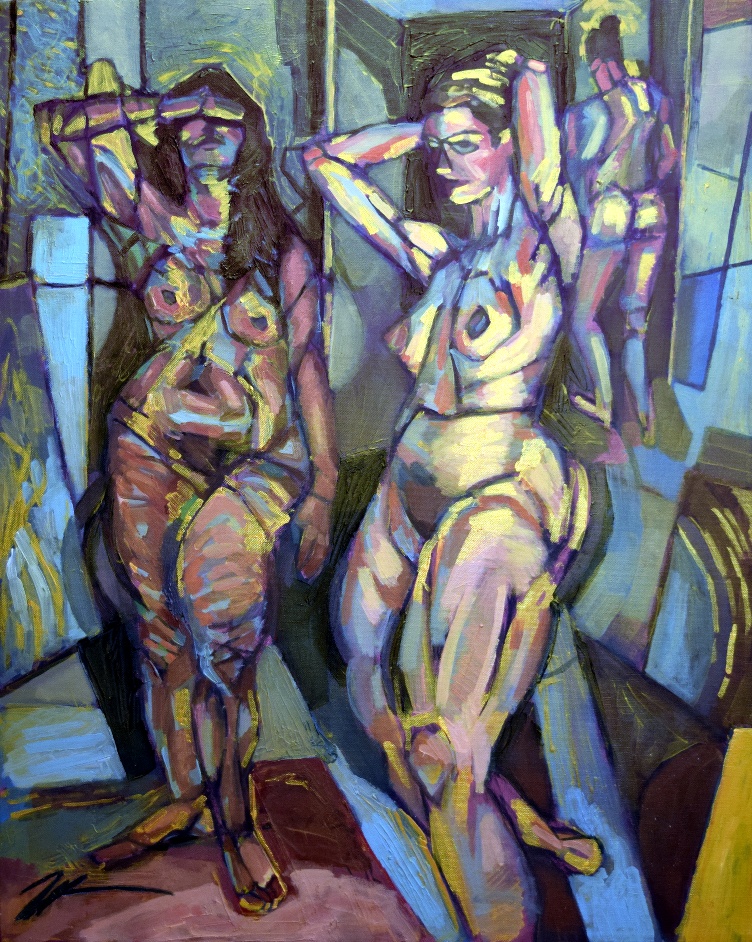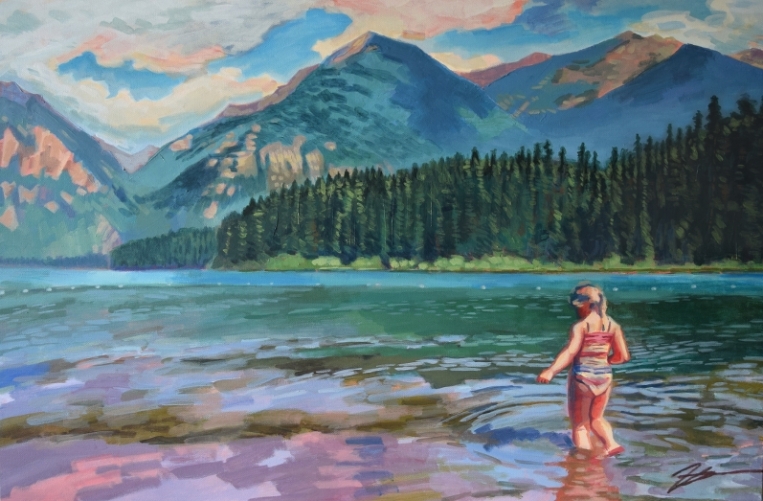Tao Te Ching / 46
When a country is in harmony with the Tao,
The factories make trucks and tractors.
When a country goes counter to the Tao,
Warheads are stockpiled outside the cities.
There is no greater illusion than fear,
No greater wrong than preparing to defend yourself,
No greater misfortune than having an enemy.
Whoever can see through all fear
Will always be safe

“Waging War” on COVID-19
As I start writing this essay, on March 29, 2020, the novel coronavirus pandemic has claimed 30,000+ lives worldwide, and health officials in the U.S. expect 100-200,000 deaths as the crisis unfolds. New York City and other major metropolitan areas are experiencing local outbreaks that have overwhelmed health system capacity and resources, further endangering communities and the workers that care for them. Here in Minnesota, we have a relatively controlled situation, but experts expect a surge in illnesses and deaths. Today, Minnesota has only lost nine people to COVID-19, but that number is expected to grow exponentially in the coming weeks. In response to the fast-spreading pandemic, cities have instituted measures to slow it down: social distancing, lockdowns, health care facility visitor restrictions, business closures and much more. As such, the economy has come to a grinding halt as governments attempt to “flatten the curve” of infections, or at least delay the spike to allow our fragmented health care infrastructure time to adequately prepare. This moment has resulted in job losses, resource scarcity, and widespread suffering – everything about how we live contemporary life is being redefined. Needless to say, it’s a fraught, challenging time.
The words “unprecedented” and “uncertainty” seem to bounce around much more than usual these days. During times of great uncertainty, Americans have often relied on the metaphor of war for inspiration. The war on drugs, war on crime, war on poverty, and even war on chronic disease are examples. This moment of COVID-19 is no exception: you hear every day of community members, patients, doctors, nurses, health officials, politicians, trying to “fight” the pandemic, declaring war on COVID-19. President Trump has invoked the Defense Production Act to manufacture a therapeutic arsenal: ventilators and protective equipment. Simultaneously, the humongous military hospital ships Comfort and Mercy approach our eastern and western shores, and hospital systems fortify their wards for the coming onslaught of the sickened. Meanwhile, the public “shelters in place,” subjected to the grim 24-hour news cycle, with its images of overflowing hospitals around the world. Infection rates and death tolls climb, horror-stricken people hoard food and, yes, toilet paper. It’s a moment that, filled with fear, anxiety and uncertainty, feels very much like war. In order to fight this “war,” many of us have had to withdraw from our social networks, our families and our livelihoods – the very elements which give us strength. We are asked to operate at a safe “social distance,” to quarantine, and not to leave home. In other words, it’s not an active fight. Most of this feels like passive action, an almost Buddhist “doing by not doing.” So one has to wonder: in the absence of a way for individuals to truly “fight” against this pandemic, and acknowledging the compounding effects of fear on the problem, is the tired and convenient concept of “war” the right metaphor for this moment?
It’s no surprise that the war trope pervades contemporary society. At every stage of our history, the human race has proven its propensity for violence and destruction. Despite our evolutionary trajectory, or perhaps because of it, we are a warring species who, particularly in America, identify with a gritty, fighter-warrior attitude when it comes to adversity. Framing problems as “wars” may serve a purpose by drawing mass attention to a greater cause (the war effort), inspiring political, economic and social will to collectively mobilize. In previous wars, the government used crisis as a pretext for broad powers and control over critical resources. Finally, the invocation of wartime stirs up an American nostalgia for the golden post-war periods of the 1920s and 1950s, times of sacrifice followed by relative prosperity – the “good old days.” At best, characterizing the COVID-19 pandemic as a war may appeal to American’s fighting spirit of survival, encourage people and companies to work together, and pave the way for broader government control of a rapidly evolving situation. Despite our millenia of experience with war, I worry about the metaphor’s implications for our collective psyche. In the words of Star Wars’ Master Yoda: “To answer power with power, the Jedi way this is not. In this war, a danger there is, of losing who we are.” In thinking of national and global challenges such as COVID-19 as wars, what of ourselves do we stand to lose?
Imagining our challenges as wars necessitates the creation of a monolithic, semi-fictional “enemy” that deepens our sense of fear. Fear leads to a dynamic response by our sympathetic nervous systems commonly called “fight or flight.” Our response to fear can be organized and appropriate, but often it results in frenzy, panic and insane behavior. The news, while keeping us informed, commands our rapt attention to often unsettling developments, and the far corners of the internet propagate the darkest stories. The isolation from our routines, friends, families and communities, the missing sense of purpose that work brings to our lives, and the insistence that we are fighting a war also compound uncertainty, increasing our fear. As fear mounts, so too does the likelihood of insane, individualistic behavior: hoarding food and resources, extreme isolation and refusal to engage with the world, promoting negative rumors and mistrusting and/or resenting or blaming those around us. Throughout the outbreak, we have seen steadily rising rates of domestic violence, mental health crises and suicide. These negative outcomes fanning out from fear, this collateral damage, confronts us: how do we address this crisis without adding other unnecessary suffering in the process?
Searching for the Bigger Picture
If we are to fight a war against COVID-19, then logic demands the novel coronavirus must be the enemy. Not to forget the other “enemies” that become scapegoats in the “war effort.” The creation of such an enemies increases the illusion of our separateness from Nature and each other, cutting us off from the natural rhythms and cycles within which we are born, live and perish. Much of our human experience, the built environment, our faith traditions, our scientific practices and our assumptions about the world serve to separate the human from the rest of Nature, and sometimes from each other. We create categories, walls, boundaries, borders, limits, quarantines to identify, divide and keep difference at arm’s length. Whereas the individual is the “self,” all else becomes “not-self:” other humans, animals, plants, fungi, bacteria and viruses become the “other,” the “foreigner,” the “invader” or the “enemy.” These artificial degrees of separation make us forget that We (all species, all beings) are all connected in a complex web of interdependence. Just as humans are manifestations of Nature, so too are each living and nonliving formation in the universe – and we are all related. By emphasizing our relationship to the virus instead of our resistance to it, we may creatively explore new strategies, new ways of thinking about how to adapt.
This is about the big picture. In the Planetary Collective’s short film Overview, astronauts describe the “overview effect,” the experience of viewing Earth from orbit, as a whole. From such a vantage point, our imaginary boundaries and national identities vanish, our constructed differences dissolve. Only the truth of the big picture remains: We (all life) are residents of “spaceship Earth,” a living, breathing superbeing in which we all participate, within which all our destinies are woven. Global crises such as COVID-19 or climate change have the power to change our perspective in a similar way, but only if we let them – it is a choice. As unpopular a notion as it may currently be, viruses and all microscopic pathogens figure into this vast family of Earthlings, these expressions of Nature. Is waging war on fellow Earthlings – parts of the larger Us – really the best way forward? Especially when the “enemy” is invisible to the naked eye, spreads rapidly, infects insidiously? At best, waging war on oneself is useless or insane. At worst, it is gravely self-destructive.
One might argue that our very bodies “wage war” or “fight” against foreign invaders. The metaphor of war has often been applied to the work of our immune systems against pathogens. The assigned language for immune responses includes “attack, defend, kill, neutralize, dissolve, etc.” Specific cells have been given intimidating names like “natural killers, macrophages (big devouring cells), cytotoxic (cell-toxic) cells” and “antibodies.” War may be a convenient way to characterize the behavior of the immune system, but it’s more complicated than that. As we look further into immune responses, it becomes apparent that pathogens are not only disarmed and dissolved, but their protein marker components are incorporated into our own immune cells, effectively merging with them to allow room for coexistence. In one way of looking at it, our bodies seek to increase our sameness with other life rather than increase our difference. Simply put, when faced with a challenge, our immune systems seek to transform rather than eradicate.
Unfortunately, in our imperfect reality, humans and pathogens cannot always coexist harmoniously in a dance of balanced adaptation. As we overprescribe antibiotics, we create “superbugs,” resistant to many of our cures. As we mistreat the land, encroach on animal populations, and generally live out of balance with the natural world, we encounter “novel” viruses that jump from a reservoir species to our own. When the immune system response fails or overreacts and treatments for disease run out, we acknowledge mortality as a result of infection. Until very recently in the human story, infectious disease killed most humans, and much earlier than most humans live today. Death by infection was commonplace and a near-expectation, part of the human condition. When our fragile bodies succumb, we are reminded that infection and death are a natural part of our life cycle. Imagining our total separateness from infection and death only reinforces the lie, prolongs our suffering. When physical and psychological suffering become inevitable, I suggest we are in need of new metaphors for our health, wellness and survival – metaphors that inspire growth, adaptation and connection instead of metaphors – like war – that increase fear and, in turn, lead to further suffering.
Alternatives to War: Growth, Adaptation & Transformation
As a registered nurse, I naturally look to nursing theory to gain perspective on such questions. Nursing theory gives us concepts, frameworks, models and metaphors to help us understand the complexity of human health. One theory I have come to appreciate is Sister Callista Roy’s Adaptation Model, which characterizes the human health experience as a series of successful or unsuccessful adaptations. In this model, the nursing process focuses on increasing the subject’s capacity to adapt. Growth and adaptation can be enveloped into the concept of “transformation,” which I think is an ideal alternative metaphor for overcoming crisis. Transformation implies that something about us can change in response to the changing external circumstances, in this case COVID-19. In Roy’s words: “Health is not freedom from the inevitability of death, disease, unhappiness and stress, but the ability to cope with them in a competent way.” Instead of resisting or “fighting” an enemy, the disease, we have the opportunity to cope by transforming.
One opportunity for adaptation is a change in how we perceive ourselves in relation to Nature. Since the industrialization era and exponentially since, we have become more and more separate from Nature, walled off and protected from its rhythms. As evidenced by environmental activism around the climate crisis, this has begun to change slowly. Understanding that both humans and vectors of disease are part of Nature’s great wheel of renewal may help us overcome our fear. Indeed, viruses and humans have some key similarities: we overtake and manipulate resources to ensure our survival; we seek to reproduce ourselves; our true motive is not necessarily to kill, but nevermind that killing happens as a result of our expansion. Discarding the pretense of “separateness” from viruses, from disease, and realizing the need for coexistence (through vaccines or herd immunity) can help us accept this fact and overcome the pervading fear that causes us to run, hide and fight.
We need to cope with and adapt to COVID-19, and realistically that means enough of us contracting it – very gradually – so that our fragmented and limited health care resources are not overwhelmed, and the vulnerable have a place to receive treatment when needed. To achieve this, we are asked to cultivate separateness, however temporary, from each other. Social distancing, isolation and quarantine are now everyday, household terms. These passive actions run counter to the war metaphor, which involves “fighting, killing, eradicating,” – yet more evidence that war is not the right metaphor for these times. Withdrawal into our homes and internal, private lives represents an opportunity to transform: changes in the pattern of our days, changes in the pattern of disease spread, and perhaps changes in the pattern of our hearts and minds. Instead of fighting wars for us, these actions, these passive forms of non-resistance are Zen-like in their quiet powers: to protect, heal, and to reveal to us something new about ourselves.
Even as we separate, we must remember that separateness is merely an illusion made more tangible by these “unprecedented” and “trying” times. During this time of social distancing and isolation, we can learn from the Dakota concept mitakuye oyasin, or “all my relations,” which reminds us of the intrinsic ways we are all connected to each other in an endless web of relationships. Each being in the system plays a part connected to all the others, exactly like an ecosystem. We see this reflected in the economic challenges we face, the supply chains, the social networks, and our own family communities. But where crisis exposes failure and weakness, it also unearths tremendous potential for growth and adaptation. People are finding ways to preserve connections, or reach out in new ways: mask-making to protect others, virtual hangouts and happy hours to stay connected with friends and family, drive-by parades for kids, food drives, the list goes on. These examples provide hope that we can grow and strengthen through participation in our social-ecological roles, even during a time of fear and crisis.
Conclusion: Choosing the Right Metaphor
We are all part of the bigger story of Earth – the boundaries we create that separate species, people, and nations are all imaginary. Many of the lines we draw to divide and categorize us are drawn as a reaction to fear. COVID-19 doesn’t believe in all those lines, and neither should we. Instead of fighting wars from behind our constructed barricades (physical or imaginary), we must seek to cooperate with our fellow Earthlings, understand our role in the greater ecological picture of Earth, love each other, help each other, and grow and adapt creatively through the course of this crisis.
We have choices to make. Fear is real: fear of isolation, fear of scarcity, fear of ourselves or loved ones dying alone in a hospital, fear of the unknown. With this essay I ask: what do we do with that fear? What do we take away from the COVID-19 pandemic? What damage do we risk to ourselves by fighting this as a war, letting this very real fear control us? In the words of Richard Rohr, “Love alone overcomes fear … We are in the midst of a highly teachable moment. There’s no doubt that this period will be referred to for the rest of our lifetimes. We have a chance to go deep, and to go broad. Globally, we’re in this together. Depth is being forced on us by great suffering, which as I like to say, always leads to great love.” Through love instead of fear, we grow and adapt. By reaching out to others in inventive ways, promoting the health and safety of others in the daily decisions we make, we shift our focus as a nation from the individual good to the collective good.
As I finish this essay, on August 17, 2020, 1706 Minnesota residents have succumbed to COVID-19, the vast majority of those living in congregate settings. As a state, we appear to be climbing a (hopefully) smaller curve of infections as we reintegrate after sweeping shutdowns. As a nation, we have lost 170,000 people to COVID-19, the worst national death toll in the global community. How can a rich global power, awash with funds and technological prowess have such poor COVID-19 outcomes? This question is a topic of fierce debate. Rather than pin the blame on any one cause, I suggest we look back to the defects in our relationships with each other, the natural world and the universe.
I would be remiss not to mention the the additional challenges/opportunities 2020 has brought to the table. With the backdrop of a global pandemic, we are also living in the time of George Floyd’s killing, social upheaval around race relations, deep disruptions to our work and school lives, lack of coherent national leadership, and a bitter election on the horizon. These are liminal times; I hear again and again: Our society is unraveling. Our culture is being canceled. Times are changing. Things might actually change this time. It’s time to rise up. It’s time to move to the country and build a bunker… It seems we all agree we are on the verge of something new. How can we avoid approaching this moment with fear and war in our hearts, and instead approach it with love and openness? How can we harness the transformational power of this era and emerge from crisis with greater understanding of ourselves, each other and our relationships?
Turbulent times, and more loss, surely lie ahead as we re-integrate, as we grapple with all we are currently faced with. I believe we can do this: if we put as much energy, ingenuity, political will, money and effort into this as we generally put into fighting wars all over the globe, I have no doubt we can meet this challenge and emerge stronger than before. But we must not lose the opportunity here, the choice: do we choose the path of fear and resistance – the path of war – or the path of love? The path’s end may not end up being more consequential than what we became along the way. We must allow this moment to be our teacher, to help us grow stronger, as we adapt and transform as a species. We have the power to choose love over fear; life over war.













